The Big Question: Should Karachi be run by the Centre?
By Newsline Editorial Staff | Profile | Technology | Published 6 years ago
Ghazi Salahuddin
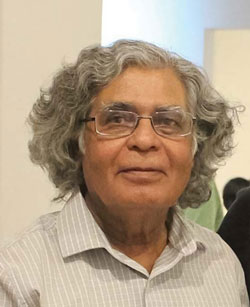 Essentially, no. It could lead to another constitutional and political crisis. But some form of intervention that is designed with the consent of the provincial legislature should be possible. If Karachi has suffered because of deadly divides at multiple levels, the healing process can only begin with a new political consensus and an acknowledgement of the fact that the nation cannot rise when Karachi goes down.
Essentially, no. It could lead to another constitutional and political crisis. But some form of intervention that is designed with the consent of the provincial legislature should be possible. If Karachi has suffered because of deadly divides at multiple levels, the healing process can only begin with a new political consensus and an acknowledgement of the fact that the nation cannot rise when Karachi goes down.
Unfortunately, that consensus does not seem possible. And Karachi is certainly going down. It is hard to imagine a U-turn on a slippery slope.
This Newsline query/inquiry is born of a renewed focus on the Karachi conundrum. Instructively, it was triggered not by any popular agitation or a bloody encounter on its streets but by the down-to-earth business of collecting the city’s garbage. It led to the federal law minister raising the possibility of the Centre using its ‘executive authority’ under Article 149 (4) to intervene in Karachi’s affairs.
And this has raised a storm, stirring up all the unresolved divergences and Catch-22s that are rooted in how Pakistan came into being and what happened in its immediate aftermath. This means that whenever our rulers come up with a plan to bring order to a chaotic Karachi, they are only temporising. They actually have no solutions. It is the same with Article 149 which no one perhaps fully understands.
This mystification may be intentional. They may be setting the stage for political moves in a larger than Karachi context. In some ways, all moves that are made to make Karachi a livable city are different versions of that surreal episode when Mustafa Kamal, Karachi’s supposedly celebrated mayor during the Musharraf era, boasted that he could remove the city’s garbage if given full authority. Lo and behold, the present mayor, an adversary, who cuts a sorry figure when he moans about his powerlessness, offered Mustafa what he had asked for. But this quixotic arrangement, worthy of Netflix, did not even last 24 hours. This is what Karachi is.
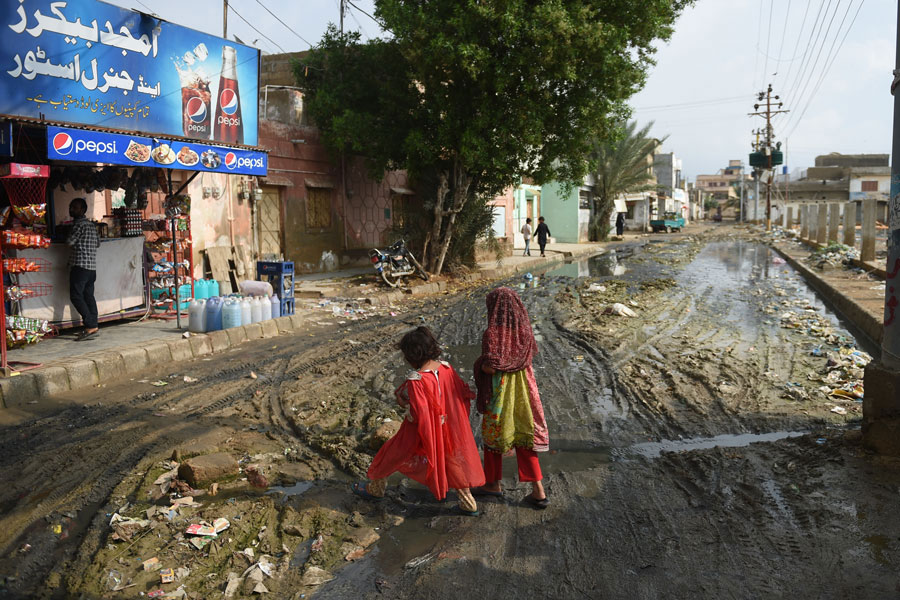
Decades of mismanagement turned streets and roads into muddy sewerage slush after the rains.
Again, we ask ‘Who owns Karachi?’ The plausible answer is that the same powers that own the country. One might argue that Karachi is run by the centre of the Centre and that is how it has assimilated its problems. One fundamental problem is the city’s administrative fragmentation. More than a dozen agencies preside over its expanding territory. On top of it, the idea of an autonomous and elected local government is contested by powerful vested interests.
So, what are the options for the citizens of Karachi? The hope as well as the worst case scenario is that Karachi will continue to be what it is, irrespective of who is running it.
Niilofur Farrukh
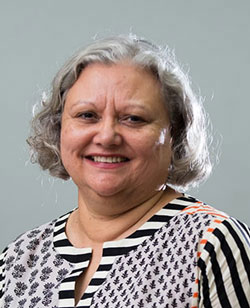 Devolution of power has been a positive step towards provincial autonomy and in my opinion Karachi should not be run by the Centre. Karachi, a city with a population bigger than many smaller countries and its complex problems of governance, can only be resolved by a local partnership between citizens, the city administration and the provincial government.
Devolution of power has been a positive step towards provincial autonomy and in my opinion Karachi should not be run by the Centre. Karachi, a city with a population bigger than many smaller countries and its complex problems of governance, can only be resolved by a local partnership between citizens, the city administration and the provincial government.
Freedom is both a moment in a nation’s history and a social and political process. In the case of Karachi, it is a city that has earned its right to be independent of the Centre by showing that it has the resolve and social imagination to be transformed by its citizens. The seminal research by Arif Hasan shows that transformative urbanisation within communities and the proactive interventions like Sindh Institute of Urology and Transplantation (SIUT), Gul Bahao and Orangi Pilot Project, The Teachers Resource Centre and the Karachi Biennale Trust are among the many indicators of its ability to deliver even under difficult conditions.
What we currently see in Karachi is the impact of limited devolution within the province. The provincial legislators have hamstrung the city government by limiting its access to power and resources though a labyrinthine system of laws that has left the city administrators disempowered. This has resulted in a colossal failure of governance and a crumbling infrastructure that can only be rectified by a sustainable re-generation that connects the mohalla to the Sindh Assembly via a robust city government.
A democracy can serve its people better when a participatory system of accountability and social responsibility makes citizens partners in formulating the laws and their implementation. In the recent past, parliamentarians and citizens worked closely to pass the Women Protection Bills in Sindh but their implementation is nowhere to be seen.
This is indicative of the lack of will and capacity in the government to implement laws. Consequently, a partnership between citizens, the city administration and the provincial government has become imperative to create a Karachi that is responsive to the urgent concerns of its 22 million citizens.
The paradigm shift from dependency on the Centre to the self-help model favoured by Karachi has vitalised many sectors and now the urgency lies in finding a formalised role for citizens in the governance of a postcolonial, decentralised political system that can help unleash the potential economic and creative power of Karachi.
Amir Zia
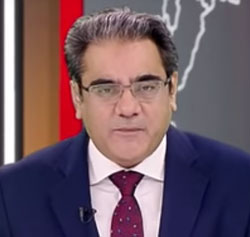 Federal Law Minister Farogh Naseem created an unnecessary controversy last month by suggesting that Article 149 of the Constitution needs to be invoked in Sindh to improve Karachi’s deteriorating civic services and address its myriad problems.
Federal Law Minister Farogh Naseem created an unnecessary controversy last month by suggesting that Article 149 of the Constitution needs to be invoked in Sindh to improve Karachi’s deteriorating civic services and address its myriad problems.
And as expected, this mere suggestion of dragging in the Centre to manage Karachi – currently the domain of the provincial government – resulted in a short-lived emotional outburst from various stakeholders, which took the attention away from the festering civic problems of this mega-city and, instead, thrust a non-issue centre-stage – at least in the media. What’s more, this storm in a tea-cup wasn’t even worth it.
To begin with, the law minister’s statement was nothing but a half-baked proposal, which led to various interpretations, one being that the Centre was planning to take over the affairs of the city. If truth be told, it articulated the desire of the law minister’s own party, the Muttahida Qaumi Movement (MQM), which is a junior partner in the ruling coalition. But this proposal – if it can be called one – had no serious backers, even within the ruling Pakistan Tehreek-e-Insaf (PTI).
Most senior PTI politicians, including Prime Minister Imran Khan, know that even a symbolic attempt to give a special status to Karachi will be seen by the Pakistan Peoples’ Party (PPP) and other forces in Sindh as an attempt to divide the province – a highly emotive issue. And in these testing times, such a step would only stoke more trouble and instability. In essence, the law minister’s proposal was a non-starter from the word go.
The federal government bungled a laudable initiative – the formation of a committee by the prime minister to suggest short-, medium- and long-term steps for the uplift of the city – that should have taken off smoothly and brought some relief and good news for the country’s restive commercial and industrial hub.
The centre made this committee – headed by the law minister – controversial, as it did not include any representative of the Sindh provincial government in it. Had saner minds prevailed, this committee would have included the Sindh Chief Minister or his nominee (a provincial local government minister) as a member. But a myopic political mindset prevented the federal government from taking such a step. When a senior PTI leader was asked about the omission of a member of the Sindh government, he provided a flimsy excuse: “The Peoples’ Party is responsible for Karachi’s mess; what’s the point of including any PPP member?”
Today’s Karachi is a mega-mess. And all stakeholders, including the three main parties representing this city in Parliament, are responsible for its plight. Consequently, all stakeholders must be absolutely clear in their minds that none of them in isolation is in a position to solve Karachi’s problems.
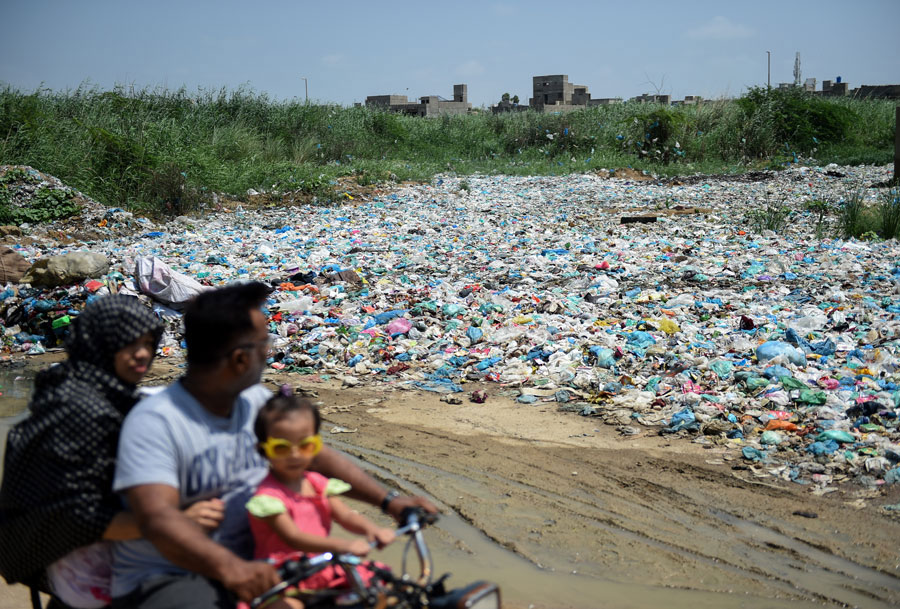
Unprecedented rains in September 2019 in Karachi brought the mega city to its knees and turned the commercial capital into a post-apocalyptic wasteland.
A grand consensus is needed among them to introduce the necessary reforms, that must include bringing unity of command to manage the affairs of the city and giving the local government system administrative and financial powers. Of course these reforms should be strictly monitored by the provincial and federal governments, if they are serious about saving the city, which only recently has been ranked as one of the 10 most unlivable cities in the world by the prestigious The Economist’s Intelligence Unit.
Unfortunately, so far the politicians have only resorted to mudslinging against each other, instead of setting aside their narrow political and financial interests and putting their heads together for the sake of the city and its citizens.
Even now, the federal government can take the lead in fixing Karachi’s problems, but this task cannot be accomplished by staging a hostile take-over. A lot of give and take, political maturity and sagacity is required to bring all the stakeholders to the table and come up with tangible recommendations aimed at reforms and the betterment of Karachi.
Unfortunately, a sincere debate, discussion and the will to change is nowhere on the cards.
Haris Gazdar
 Absolutely not! How do you rule a city in any case? Vibrant cities make their rules as they grow, usually in defiance of the best laid plans.
Absolutely not! How do you rule a city in any case? Vibrant cities make their rules as they grow, usually in defiance of the best laid plans.
If the question is about taking Karachi’s management away from the control of the provincial government of Sindh, once again, my answer is, absolutely not! Karachi does not exist in a vacuum. It lives on the land, breathes in the air and drinks the water that is of Sindh. Its healthy growth depends on nurturing its connection with its natural habitat, not severing it, as if that were even an option.
There are three possible arguments of different levels of seriousness which might be considered for a separation between Karachi and the rest of Sindh. First, that Karachi is a “political orphan.” In a democratic dispensation, the ruling elite of the Sindh province will always be drawn from “rural” areas and that elite has no sense of being connected with the city. Second, there is a clear ethnic divide between Karachi and the rest of Sindh, and hence the two will need to part ways. And third, there is such economic disparity between Karachi and the rest of Sindh that separation will be good for both.
The first argument is empirically false. Most politicians and civil servants who run the Sindh government in a democratic dispensation have homes in Karachi, are bringing up their families in the city which they see as their future. The second one takes you nowhere. Karachi is ethnically heterogeneous. It will be even more so with time, and the proportion of ethnic Sindhis in the city will keep rising. If ethnic difference is a criterion for administrative dissection then each of the districts within Karachi Division may have to go their separate ways too! And by the way, the well-worn euphemism of “urban Sindh” for Urdu-speakers and “rural Sindh” for Sindhi-speakers no longer holds. Over half of the population of Sindh, according to the last census, is urban, and a third of it, mostly Sindhi-speaking, lives outside Karachi.
The third argument – the one about economic disparity – is the one I take most seriously. Yes, the disparity bet-ween Karachi and the rest of Sindh is stark. And so are the disparities within Karachi and the rest of Sindh. Are we to have separate administrations for elite areas within Karachi and those for working class settlements? Do we not have something like that already, and is that not a problem rather than a solution?
The wealth of Karachi is premised, in large part, on the historic as well as current exploitation of the resources and labour of the rest of Sindh, and the labour of the unwealthy of Karachi itself. Karachi has to become more
inclusive for its residents as well as a bigger contributor to the economic uplift of the rest of Sindh. Dealing with these disparities, while at the same time looking after the needs of the disparate segments, is a challenge that history has thrown at us. We should accept this challenge rather than pretend that there is some way to run away from it.


